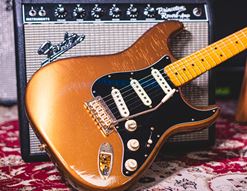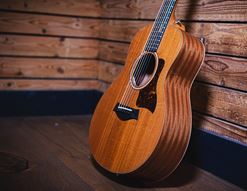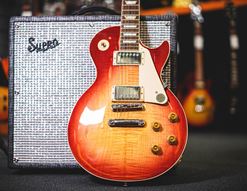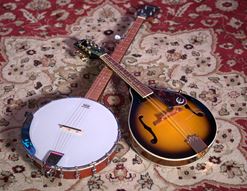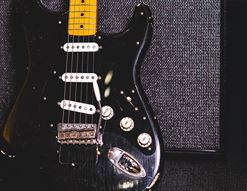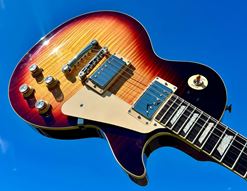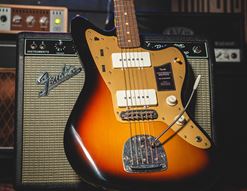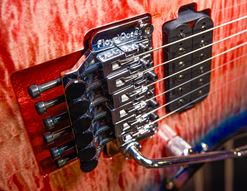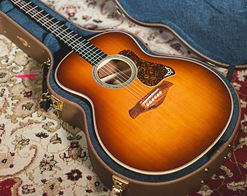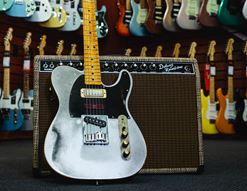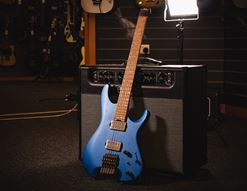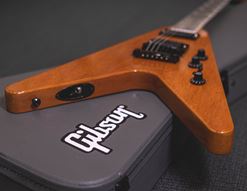How many ways can you play a guitar?
Quite a few ways, actually! There’s a whole world of styles and variations available for your picking hand, and it will both improve your overall technique and strengthen you as a musician to master a few of these styles.
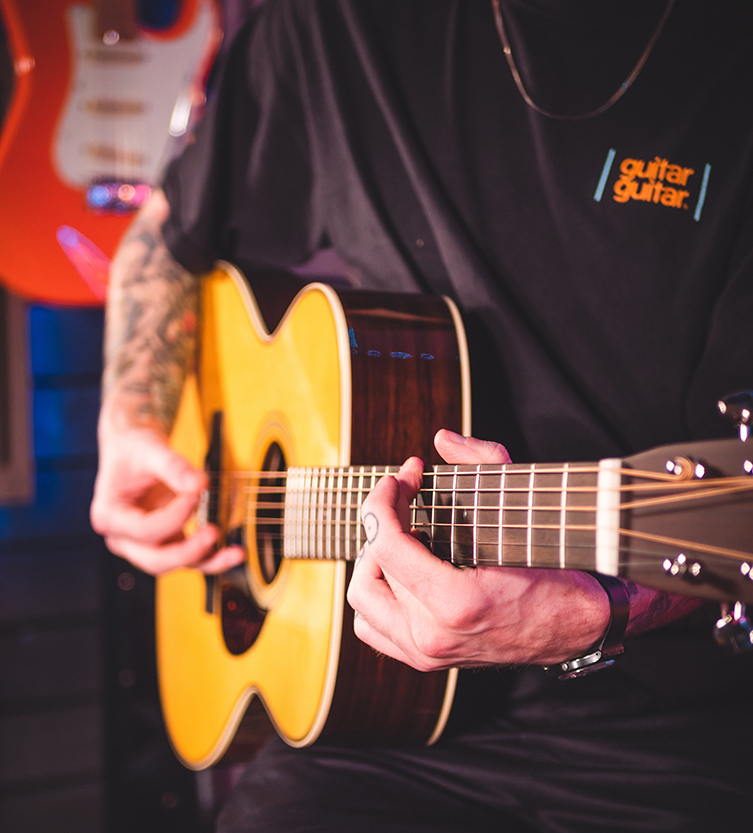
From standard fingerpicking to more advanced rock, flamenco and bluegrass techniques, there are loads of ways to spice up what your right hand is doing. Today, I’ve gathered together a number of popular and useful picking styles from all over the guitar-playing world for you to investigate. Check out today’s article and try out a few of these for yourself: you never know how many songs are just waiting to come out!
The Guitar Picking Techniques at a Glance
Add These to Your Bag of Tricks
Fingerpicking
Fingerpicking is the overarching term for playing a guitar without a plectrum. This is the underlying blueprint for playing all sorts of folk, country and even rock styles with your fingers.
Fingerpicking allows us to use multiple right hand fingers to play melody and accompaniment at the same time, building up rhythm as you do it. There are a number of different fingerpicking styles, but the most popular one is known as ‘PIMA’. Pima is an acronym, and is used to help describe fingerpicking in written notation by assigning a letter to each finger:
- P - thumb
- I - index finger
- M - middle finger
- A - ring finger
The Pima system doesn’t use the pinky finger, but that doesn’t mean you can’t! Many fingerpickers (myself included) use our pinkies to anchor the right hand to the guitar. It’s a handy way to stabilise the right hand and have a place to pivot the wrist from. It also saves fatigue from having it hover over the strings, but some pieces of music will require that, so it’s good to be adaptable.
Pima techniques generally assign the thumb to playing ‘bass’ notes on the bottom two or three strings, leaving the other fingers to roughly apply themselves to the top three strings. In practice, you’ll no doubt stray from this from time to time, but that’s the blueprint to work from at least, and it’s a great skill to have under your belt!
Strumming
Strumming is an essential part of guitar playing. Strumming involves playing a number of strings simultaneously, in a repeated rhythmic way. Normally, you hold down a chord with your left hand and use a plectrum or your right hand fingers to strike the strings all at once. That’s a strum! Build it into a rhythm for a rhythm guitar part, or slow down the strike for what we call a ‘rake’.
Flatpicking
Flatpicking is a country music term, and all it means is that you’re using a plectrum - or flatpick - instead of your fingers. A flatpick is just a normal guitar pick/plectrum, this is just a case of terminology coming from a particular scene. It’s generally used in the context of acoustic guitar playing, but not always.
Strumming, picking out melodies, holding down rhythms…if you are using a pick, then you’re flatpicking!
Travis Picking
Travis picking comes from country guitar pioneer Merle Travis, and is a very simple and effective way to fingerpick. Basically, you use the thumb for bass notes and the rest of your fingers for melody and chordal accompaniment, but the trick here is to alternate between them. One after the other, not simultaneously. This really dictates how your music will sound, and it’s a very recognisable style.
Cross Picking
Crosspicking comes from bluegrass music, and is similar to how lots of people approach the banjo. Crosspicking requires a plectrum, and it’s a style of playing continual three note arpeggios across three strings, in a clear and predictable pattern. The feel is typically 3 note clusters over a normal 4/4 beat, and a playing would either use alternate picking (see below) or a down-down-up pattern to lock in the sound.
What’s an arpeggio? It’s just a chord played by its individual notes instead of all together in a big strum. Arpeggios can be played in a sequence, as mentioned here, or in lots of other patterns.
Hybrid Picking
Hybrid picking is a relatively advanced technique that’s excellent to have in your bag of tricks if you can master it. Hybrid picking blends plectrum use with fingerpicking. You hold the pick between thumb and index finger as usual, but then use your middle and ring fingers to play additional strings. The end result is a fingerpicking style with a very clear and strong low end thanks to the pick playing (mainly) those bottom strings.
Lots of banjo players learn this and then transfer it across to the guitar, so keep that in mind if you fancy learning the banjo!
Flamenco Position
Flamenco is a very famous style of music with a whole set of its own techniques for guitar. It’s too specific to go into detail here, but I can at least impart the fingerpicking hand position to get you started.
Flamenco playing utilises all five fingers. Your right hand hovers over the strings perpendicular to the strings, as if your hand is at a right angle to them. The thumb sticks out and the other fingers sit in a loose ‘claw’ shape, awaiting use. You want your knuckles to be parallel with the strings.
It’s similar to regular fingerpicking except your hand is at more of an angle and you need your pinky, basically! In use, though, it’s pretty different: most of the fast parts are actually performed with the thumb, for example.
Remember to rest the guitar between your thighs, rather than sitting on your right thigh. You need it further across like this to let your arm function properly: you’ll tire and hurt much quicker otherwise!
Rasgueudos
Here’s one flamenco technique to try. This sounds awesome and very authentically ‘flamenco’. It’s a strumming pattern for chords that you won’t find in many other genres. Here’s how to do it:
Assume the position I outlined above. Your fingers are curved inward.
Starting with your index finger, ‘uncurl’ your hand, allowing each finger to strike the strings audibly, one after the other in quick succession.
The thumb isn’t typically used, because you’ll need it to follow the move by playing another note.
This technique can, I suppose, be used with steel string guitars, but it’s vastly more effective with a nylon string classical or flamenco guitar.
Tremolo Picking
There are two forms of tremolo picking, and whilst both have a similar-ish sound, they are performed entirely differently. Tremolo picking requires a plectrum, and you basically play a steady stream of 16th notes at a fairly rapid tempo using alternate picking.
The most famous example of this by far is Miserlou by Dick Dale, but you hear it all over the place. With a plectrum, you won’t need too much practice to achieve this.
Tremolo Technique
Tremolo is most often found in flamenco music. Different players use different amounts of fingers to perform it, but the idea is to create a constant stream of notes that are all the same volume, so it’s like one long pulsing, textured note. If you already know tremolo picking with a plectrum (see above) then you’ll understand the basic sound you’re after.
The big difference here is that you are using two or more fingers (often all four) to consistently strike the string and achieve that constant pulse. If you use two fingers, it’s like a ‘walking’ motion, left-right-left-right. If you use three of four, then the sequence includes them all at a regular interval. It is by no means easy, but the coolest stuff never is!
Sweep picking
Sweep picking is a very specific way of approaching arpeggios. This technique moves in a linear way across multiple strings, and the idea is to ‘sweep’ the pick - so it’s not a strum - across the strings whilst timing it so that you fret the notes you want on each string with your left hand as the pick sweeps through. You don’t hold down the chord/arpeggio shape, because you don’t want the notes blending into each other: each note plays and ends, if you follow?
The result is a smooth, clean arpeggio sound that is very impressive and musical if played with precision and confidence.
Alternate Picking
Alternate picking is simply when you apply a strict ‘down-up-down-up’ direction to your picked notes. Alternate picking is precise and often involves speed, so it’s not the easiest technique to learn, but there’s an undeniably impressive sound there once you have it perfected. Alternate picking is a way to play fast without using legato, in other words. Particularly on acoustic guitars, legato is hard to get a consistent sound from, so many acoustic pickers use alternate picking for speedy runs.
What’s legato? Well, it’s not really a picking technique, but it’s useful to know, so here it is…
Legato
Legato on guitar is when you use your left hand fingers to play notes without using the right hand to pick at all. You use the natural force of your fingertips to ‘hammer on’ to notes and ‘pull off’ them. Legato has a smooth and even sound since there is no plectrum strike involved at any point.
Normally, legato is used in linear passages up and down strings, but you can hammer onto adjacent strings once you practice the technique. It may sound unusual when written down like this, but legato is a pretty standard thing and you’ve definitely heard it before!
Add These to Your Bag of Tricks
All of the above techniques are useful for real-world guitar playing. Some are downright essential, and others will add magic and pizazz to your playing. Remember: you might not have much of a need for sweep-picked passages in your music, but just think of how capable a player you’ll be from learning this discipline? That skill level will raise your game in a number of ways, so do consider dedicating some time to improving your techniques. You want to be a well-rounded, skillful musician, right?
I hope you do, and I hope that today’s article has given you a few paths to wander down and investigate. Enjoy yourself!



